Alberta
Finance Minister Nate Horner says Alberta on track to $2.4 billion surplus
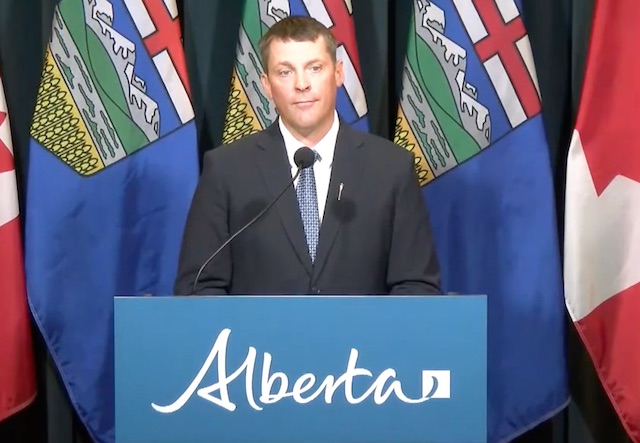
Q1 update: Continued fiscal growth
Alberta’s strong fiscal management continues to secure Alberta’s future.
Alberta is on course to record a $2.4-billion surplus at the end of 2023-24, despite an unprecedented wildfire season and ongoing economic volatility. This is $94 million higher than forecast in Budget 2023.
Strong and prudent fiscal management will help Alberta remain the economic engine of Canada. The government’s new fiscal framework requires the government to use at least half of available surplus cash to pay down debt, freeing up money that can support the needs of Alberta families now and for decades to come. Based on the first quarter update, Alberta plans to eliminate $2.6 billion in taxpayer-supported debt this fiscal year.
“Alberta’s finances remain strong, and thanks to our new fiscal framework, Alberta’s fiscal position is poised to become even stronger. Our continued priorities of paying down debt and saving for the future will ensure we have the capacity to meet Albertans’ needs both today and well into the future.”
After the required 50 per cent of projected available surplus cash is used to pay off maturing debt, remaining surplus cash will be allocated to the Alberta Fund, where it can be used for additional debt repayment, contributions to the Alberta Heritage Savings Trust Fund and one-time initiatives that do not lead to a permanent increase in government spending. A projected $2.6 billion will be set aside in the Alberta Fund in 2023-24.
Revenue
Revenue for 2023-24 is forecast at $71.1 billion, a $491-million increase from Budget 2023.
Alberta’s robust business environment is attracting investment and people from around the country, driving a projected $1.5-billion increase in corporate and personal income tax revenue.
The corporate income tax revenue forecast has increased by $889 million, following a record-high year in 2022-23. At eight per cent, Alberta’s general corporate income tax rate is the lowest in the country. Alberta’s low taxes remain one reason investors choose Alberta.
Keeping life affordable is a key priority for Alberta’s government, which is why it paused the provincial fuel tax on gasoline and diesel in January. Extending the pause to the end of 2023 will save Albertans and Alberta businesses 13 cents per litre on gasoline and diesel for the rest of the calendar year. As a result, fuel tax revenue is forecast to be reduced by $532 million – money that is going directly back into the pockets of Albertans every time they fill up their vehicle.
Between April 1 and June 30, the price of West Texas Intermediate (WTI) oil averaged US$74 per barrel. It is now forecast to average $US75 per barrel over the course of the fiscal year, $4 lower than the Budget 2023 forecast. The resulting impact on Alberta’s revenue is being offset by a narrower light-heavy oil price differential, which is now forecast to average US$15 per barrel, $5 narrower than at budget.
Bitumen royalties are projected to increase by $515 million in 2023-24; however, overall resource revenue is projected to decrease by $694 million from the budget forecast. Lower natural gas royalties account for most of the projected decrease due to weaker prices, robust North American production and the impact of wildfires on production in Alberta.
Expense
Expense for 2023-24 is forecast at $68.7 billion, a $397-million increase from Budget 2023. The expense increase before the forecast contingency allocation is $1.6 billion. Of this, $397 million is funded by dedicated revenue and $1.2 billion is set aside as a preliminary allocation from the contingency, leaving $323 million unallocated.
The unprecedented wildfire season in the province prompted Alberta’s government to act swiftly and responsibly to ensure the safety of Albertans in affected areas. To date, the government has allocated $750 million for fighting wildfires in the province this year, along with $175 million for uninsurable losses, $75 million of which is expected to be covered by the federal government, and $55 million, mainly for emergency evacuation payments. Alberta’s government will continue to support Albertans during difficult situations like natural disasters.
The operating expense forecast has increased by $179 million, mainly due to a $214-million increase in Health funding that is being fully offset by federal bilateral agreement revenue. Capital grant increases of $170 million are mainly for re-profiling projects from the 2022-23 fiscal year.
Debt servicing costs are forecast to increase $245 million from budget, mainly due to higher interest rates – reiterating the importance of government’s commitment to paying down debt.
Alberta Heritage Savings Trust Fund
The Alberta Heritage Savings Trust Fund is Alberta’s long-term savings account, and the government remains committed to growing it. The fund performed well during the 2023-24 first quarter, earning a two per cent return with a net investment income of $739 million. Its fair value of net assets on June 30 was $21.6 billion, an increase from the $21.2 billion recorded at the end of the previous fiscal year.
Over five years, the fund returned 6.4 per cent, which is 0.6 per cent above the return of its passive benchmark.
Economic outlook
By continuing to grow and diversify Alberta’s economy, Alberta’s government is continuing to exceed expectations. Alberta’s real gross domestic product is now expected to rise three per cent in 2023, up 0.2 percentage points from Budget 2023. Projections by private forecasters show the province is expected to lead the country in economic growth this year.
Robust population growth is supporting Alberta’s labour market and generating demand and activity in Alberta’s economy, ultimately boosting the province’s economic outlook. Although risks and uncertainty persist due to rising interest rates, high consumer prices and other factors, Alberta’s economy remains well-positioned to withstand any challenges that arise.
Quick facts
- The amount of surplus cash available for debt repayment and the Alberta Fund is calculated after several necessary cash adjustments are made.
- In 2023-24, the total amount available for allocation is forecast at $5.2 billion, which includes $5.1 billion carried over from the 2022-23 final results.
Alberta
Housing in Calgary and Edmonton remains expensive but more affordable than other cities
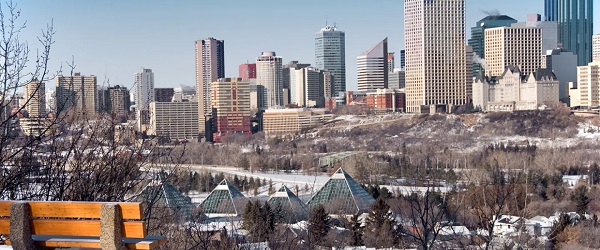
From the Fraser Institute
By Tegan Hill and Austin Thompson
In cities across the country, modest homes have become unaffordable for typical families. Calgary and Edmonton have not been immune to this trend, but they’ve weathered it better than most—largely by making it easier to build homes.
Specifically, faster permit approvals, lower municipal fees and fewer restrictions on homebuilders have helped both cities maintain an affordability edge in an era of runaway prices. To preserve that edge, they must stick with—and strengthen—their pro-growth approach.
First, the bad news. Buying a home remains a formidable challenge for many families in Calgary and Edmonton.
For example, in 2023 (the latest year of available data), a typical family earning the local median after-tax income—$73,420 in Calgary and $70,650 in Edmonton—had to save the equivalent of 17.5 months of income in Calgary ($107,300) or 12.5 months in Edmonton ($73,820) for a 20 per cent down payment on a typical home (single-detached house, semi-detached unit or condominium).
Even after managing such a substantial down payment, the financial strain would continue. Mortgage payments on the remaining 80 per cent of the home’s price would have required a large—and financially risky—share of the family’s after-tax income: 45.1 per cent in Calgary (about $2,757 per month) and 32.2 per cent in Edmonton (about $1,897 per month).
Clearly, unless the typical family already owns property or receives help from family, buying a typical home is extremely challenging. And yet, housing in Calgary and Edmonton remains far more affordable than in most other Canadian cities.
In 2023, out of 36 major Canadian cities, Edmonton and Calgary ranked 8th and 14th, respectively, for housing affordability (relative to the median after-tax family income). That’s a marked improvement from a decade earlier in 2014 when Edmonton ranked 20th and Calgary ranked 30th. And from 2014 to 2023, Edmonton was one of only four Canadian cities where median after-tax family income grew faster than the price of a typical home (in Calgary, home prices rose faster than incomes but by much less than in most Canadian cities). As a result, in 2023 typical homes in Edmonton cost about half as much (again, relative to the local median after-tax family income) as in mid-sized cities such as Windsor and Kelowna—and roughly one-third as much as in Toronto and Vancouver.
To be clear, much of Calgary and Edmonton’s improved rank in affordability is due to other cities becoming less and less affordable. Indeed, mortgage payments (as a share of local after-tax median income) also increased since 2014 in both Calgary and Edmonton.
But the relative success of Alberta’s two largest cities shows what’s possible when you prioritize homebuilding. Their approach—lower municipal fees, faster permit approvals and fewer building restrictions—has made it easier to build homes and helped contain costs for homebuyers. In fact, homebuilding has been accelerating in Calgary and Edmonton, in contrast to a sharp contraction in Vancouver and Toronto. That’s a boon to Albertans who’ve been spared the worst excesses of the national housing crisis. It’s also a demographic and economic boost for the province as residents from across Canada move to Alberta to take advantage of the housing market—in stark contrast to the experience of British Columbia and Ontario, which are hemorrhaging residents.
Alberta’s big cities have shown that when governments let homebuilders build, families benefit. To keep that advantage, policymakers in Calgary and Edmonton must stay the course.
Alberta
Danielle Smith slams Skate Canada for stopping events in Alberta over ban on men in women’s sports

From LifeSiteNews
The Alberta premier has denounced Skate Canada as ‘disgraceful’ for refusing to host events in the province because of a ban on ‘transgender’ men in women’s sports.
Alberta Premier Danielle Smith has demanded an apology after Skate Canada refused to continue holding events in Alberta.
In a December 16 post on X, Smith denounced Skate Canada’s recent decision to stop holding competitions in Alberta due to a provincial law keeping gender-confused men from competing in women’s sports.
“Women and girls have the right to play competitive sports in a safe and fair environment against other biological females,” Smith declared. “This view is held by a vast majority of Albertans and Canadians. It is also common sense and common decency.”
Women and girls have the right to play competitive sports in a safe and fair environment against other biological females.
This view is held by a vast majority of Albertans and Canadians. It is also common sense and common decency.
Skate Canada‘s refusal to hold events in… pic.twitter.com/n4vbkTx6B0
— Danielle Smith (@ABDanielleSmith) December 16, 2025
“Skate Canada‘s refusal to hold events in Alberta because we choose to protect women and girls in sport is disgraceful,” she declared.
“We expect they will apologize and adjust their policies once they realize they are not only compromising the fairness and safety of their athletes, but are also offside with the international community, including the International Olympic Committee, which is moving in the same direction as Alberta,” Smith continued.
Earlier this week, Skate Canada announced their decision in a statement to CBC News, saying, “Following a careful assessment of Alberta’s Fairness and Safety in Sport Act, Skate Canada has determined that we are unable to host events in the province while maintaining our national standards for safe and inclusive sport.”
Under Alberta’s Fairness and Safety in Sport Act, passed last December, biological men who claim to be women are prevented from competing in women’s sports.
Notably, Skate Canada’s statement failed to address safety and fairness concerns for women who are forced to compete against stronger, and sometimes violent, male competitors who claim to be women.
Under their 2023 policy, Skate Canada states “skaters in domestic events sanctioned by Skate Canada who identify as trans are able to participate in the gender category in which they identify.”
While Skate Canada maintains that gender-confused men should compete against women, the International Olympic Committee is reportedly moving to ban gender-confused men from women’s Olympic sports.
The move comes after studies have repeatedly revealed what almost everyone already knew was true, namely that males have a considerable innate advantage over women in athletics.
Indeed, a recent study published in Sports Medicine found that a year of “transgender” hormone drugs results in “very modest changes” in the inherent strength advantages of men.
Additionally, male athletes competing in women’s sports are known to be violent, especially toward female athletes who oppose their dominance in women’s sports.
Last August, Albertan male powerlifter “Anne” Andres was suspended for six months after a slew of death threats and harassments against his female competitors.
In February, Andres ranted about why men should be able to compete in women’s competitions, calling for “the Ontario lifter” who opposes this, apparently referring to powerlifter April Hutchinson, to “die painfully.”
Interestingly, while Andres was suspended for six months for issuing death threats, Hutchinson was suspended for two years after publicly condemning him for stealing victories from women and then mocking his female competitors on social media. Her suspension was later reduced to a year.
-

 Alberta2 days ago
Alberta2 days agoDanielle Smith slams Skate Canada for stopping events in Alberta over ban on men in women’s sports
-

 International1 day ago
International1 day agoTOTAL AND COMPLETE BLOCKADE: Trump cuts off Venezuela’s oil lifeline
-
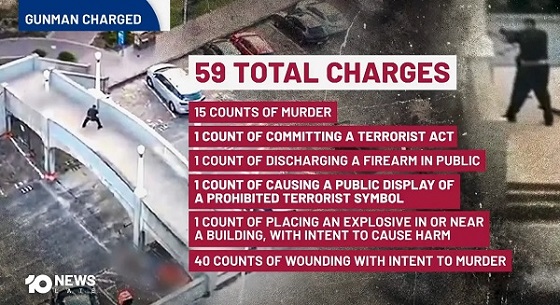
 Crime2 days ago
Crime2 days agoThe Uncomfortable Demographics of Islamist Bloodshed—and Why “Islamophobia” Deflection Increases the Threat
-
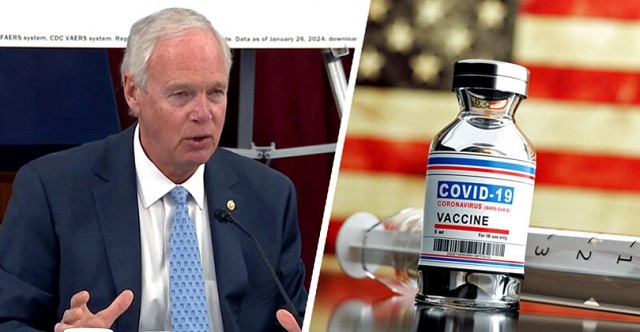
 COVID-191 day ago
COVID-191 day agoSenator Demands Docs After ‘Blockbuster’ FDA Memo Links Child Deaths To COVID Vaccine
-

 Business18 hours ago
Business18 hours agoCanada Hits the Brakes on Population
-

 COVID-191 day ago
COVID-191 day agoChina Retaliates Against Missouri With $50 Billion Lawsuit In Escalating Covid Battle
-
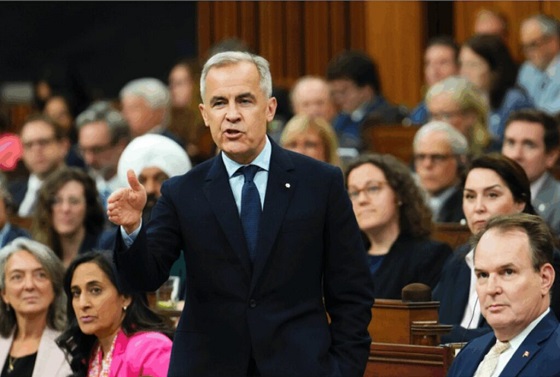
 Energy2 days ago
Energy2 days agoLiberals Twisted Themselves Into Pretzels Over Their Own Pipeline MOU
-

 International2 days ago
International2 days agoBondi Beach Shows Why Self-Defense Is a Vital Right






